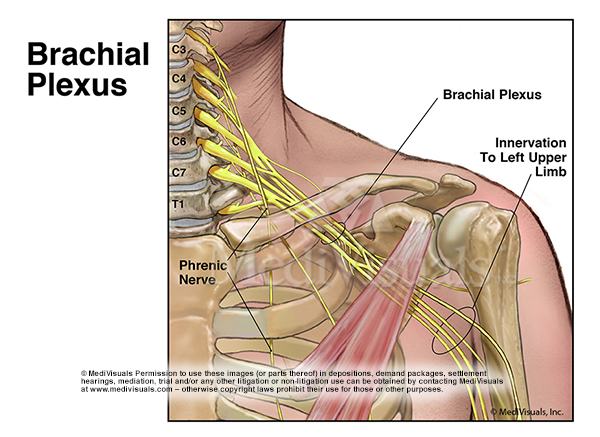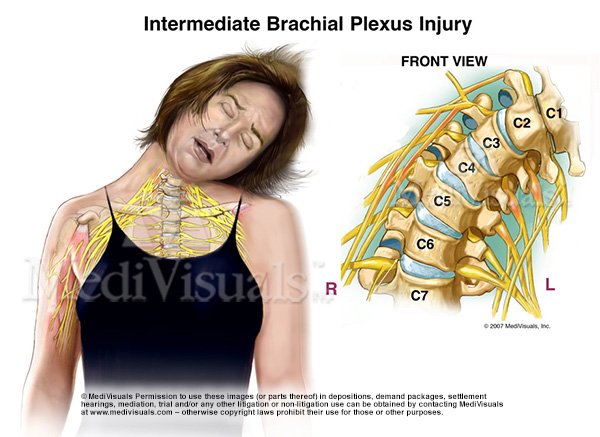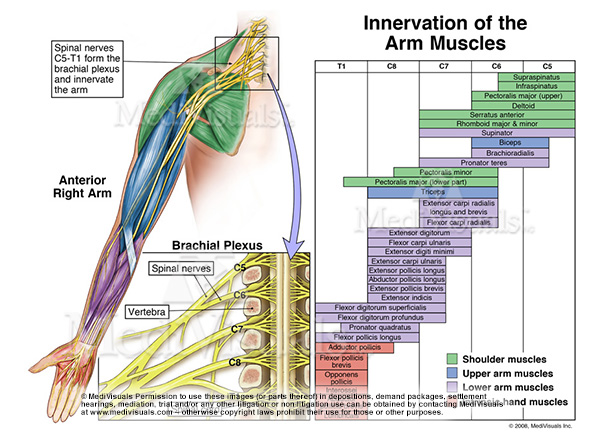By: Robert Shepherd MS, Certified Medical Illustrator, President & CEO, MediVisuals Inc.®
Injuries to the brachial plexus can often take place from trauma similar to that which causes cervical spine injuries and can also manifest similar symptoms. As shown in the illustration below, the brachial plexus is formed by several of the cervical nerve roots and the T1 nerve root.

Sometimes injury to the brachial plexus can be the direct result of excessive stretch during a traumatic event. For example, in a motor vehicle collision with a violent side impact the nerves on the contralateral side of the impact (and resulting flexion) may be stretched and/or torn. [see illustration below]

Injury to the surrounding muscles can indirectly cause injury to the brachial plexus, as well. The brachial plexus runs between the anterior and middle scalene muscles, which connect the cervical spine and first rib. In a motor vehicle collision, hyperextension of the neck may excessively stretch these muscles, as demonstrated in the illustration below.

When these muscles are stretched, the resulting swelling or spasm can result in symptoms consistent with cervical nerve root injury even though the cervical nerve roots or brachial plexus themselves may not be directly injured. [see illustration below]

Thoracic outlet syndrome is another mechanism by which the brachial plexus can be injured. The illustration below shows that the axillary sheath, which contains the nerves from the brachial plexus and the axillary vein and artery, passes through the opening created between the clavicle and first rib.

As one can see in the illustration below, an injury to the brachial plexus affects the motor and sensory function of the arm. The earlier the injury is identified and treated, the better chances are for recovery and preventing permanent damage. However, this is also dependent on the severity of the initial injury. Sometimes surgical intervention is needed to address torn/ruptured nerves and excessive scarring.

As one can see in the illustration below, an injury to the brachial plexus affects the motor and sensory function of the arm. The earlier the injury is identified and treated, the better chances are for recovery and preventing permanent damage. However, this is also dependent on the severity of the initial injury. Sometimes surgical intervention is needed to address torn/ruptured nerves and excessive scarring.

This is the first of a two part article. Please check back to read Part 2, which discusses brachial plexus injury in infants during delivery (Shoulder dystocia).
